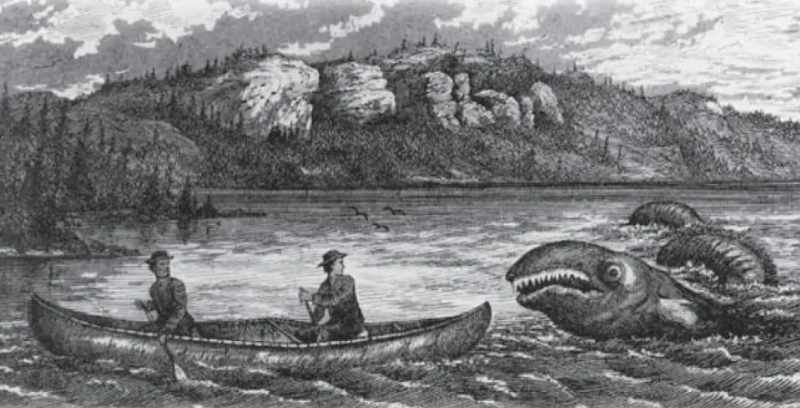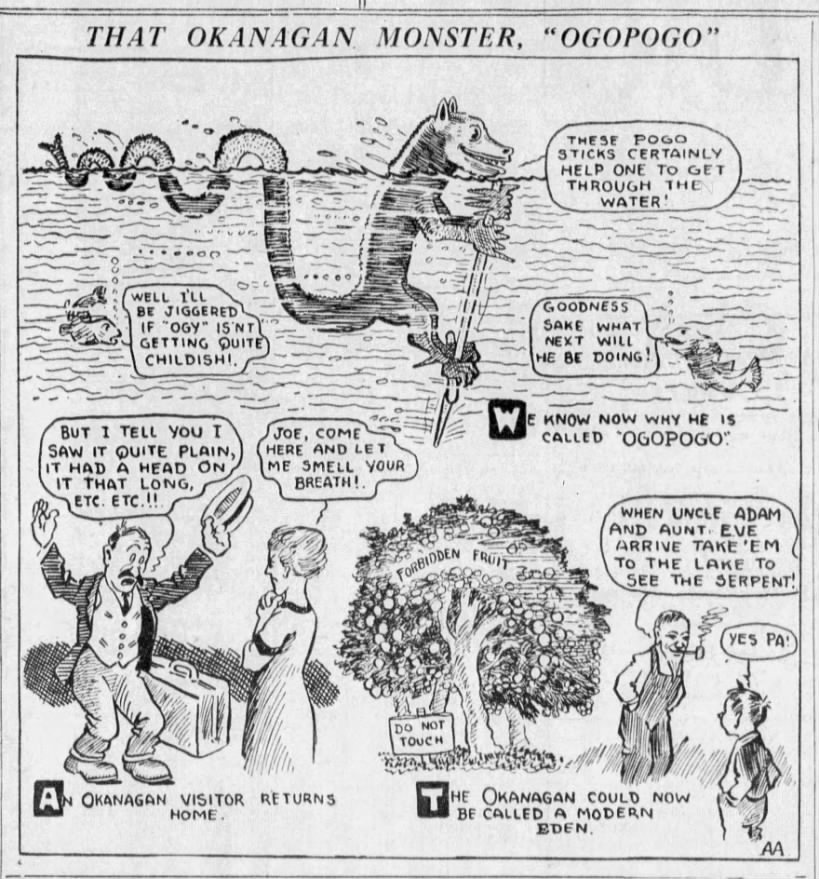Ogopogo is the name given to a cryptid reported to live in Okanagan Lake, in British Columbia, Canada. Ogopogo has been allegedly seen by First Nations people since the 19th century. The most common description of Ogopogo is a 40 to 50-foot-long (12 to 15 m) sea serpent. British cryptozoologist Karl Shuker has categorized the Ogopogo as a “many hump” variety of lake monster, and suggested it may be a kind of primitive serpentine whale such as Basilosaurus. However, because the physical evidence for the beast is limited to unclear photographs and film, it has also been suggested that the sightings are mis-identifications of common animals, such as otters, or inanimate objects, such as floating logs. Some believe that it is the Loch Ness Monster. However, the likelihood of a creature swimming from the coast of British Columbia to Scotland and back is unlikely.
| Alias Ogopogo, N’ha-a-itk |
| Real Names/Alt Names N/A |
| Characteristics Film Characters, Paranormal Mysteries, Aquatic, Cryptid, Realism and Victorian Age, Canadian |
| Creators/Key Contributors Unknown |
| First Appearance Canadian folklore |
| First Publisher ○ |
| Appearance List “That Okanagan Monster, ‘Ogopogo'” (1926) in The Vancouver Daily Province (1926-08-27), Ogopogo: The Okanagan Mystery—From Indian Lore to Contemporary Evidence (1977) by Mary Moon, Ogopogo: The True Story of the Okanagan Lake Million Dollar Monster (1986) by Arlene Gaal |
| Sample Read That Okanagan Monster “Ogopogo” [Web] |
| Description Ogopogo is the name given to a cryptid reported to live in Okanagan Lake, in British Columbia, Canada. Ogopogo has been allegedly seen by First Nations people since the 19th century. The most common description of Ogopogo is a 40 to 50-foot-long (12 to 15 m) sea serpent. British cryptozoologist Karl Shuker has categorized the Ogopogo as a “many hump” variety of lake monster, and suggested it may be a kind of primitive serpentine whale such as Basilosaurus. However, because the physical evidence for the beast is limited to unclear photographs and film, it has also been suggested that the sightings are mis-identifications of common animals, such as otters, or inanimate objects, such as floating logs. Some believe that it is the Loch Ness Monster. However, the likelihood of a creature swimming from the coast of British Columbia to Scotland and back is unlikely. |
| Source Ogopogo – Public Domain Super Heroes Wiki |


